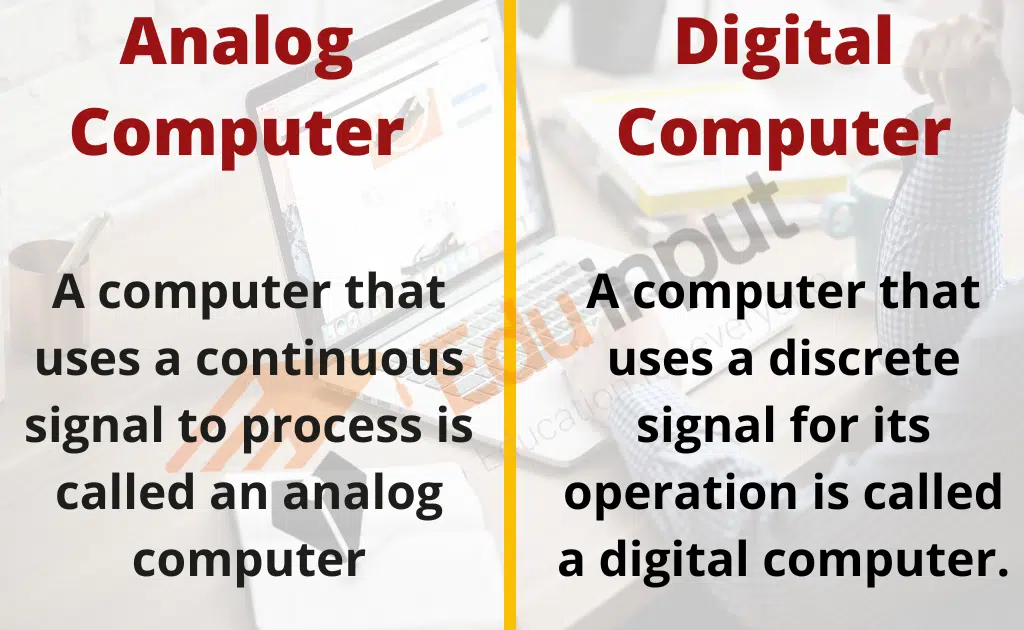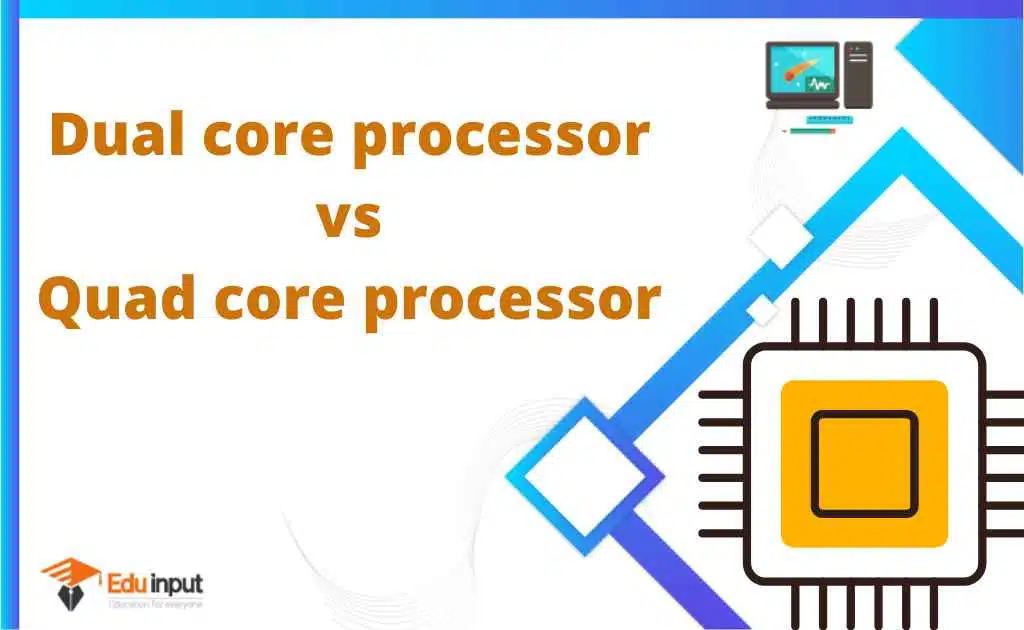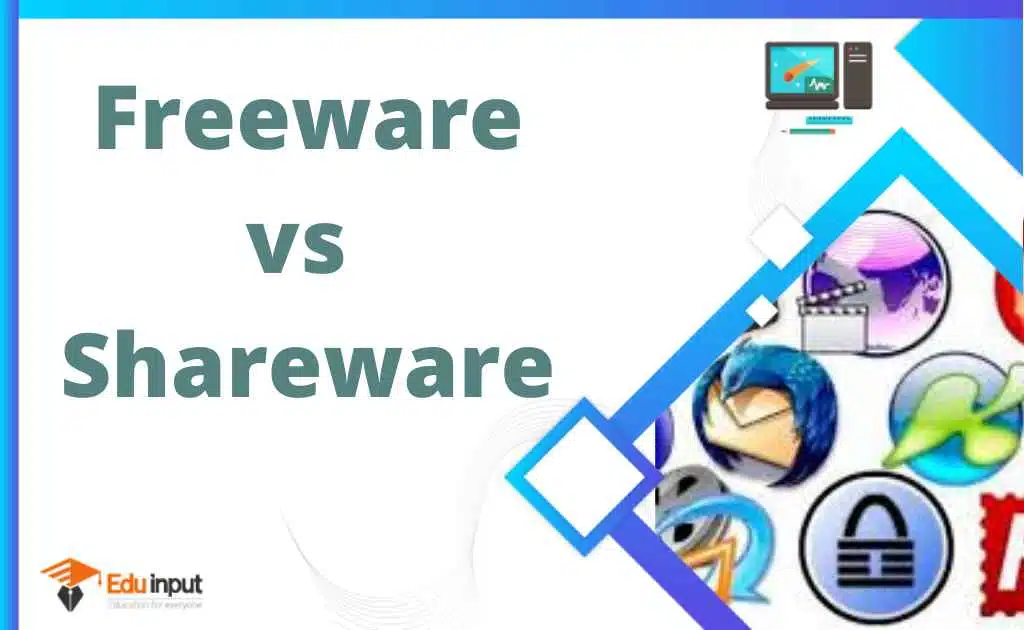Difference between Analog Computers and Digital Computers
The major difference between analog computers and digital computers is that analog computers function with signals that are continuous, while digital computers can only use signals that are discrete. In this article first will learn the application and function of digital and analog computers.

Analog computer
An Analog computer is a type of computer that uses physical quantities in the form of waves or in a continuous form. Analog computers were in use during the 1950s and 1960s and were a successor to code-breaking machines used during World War II.
Different Analog computers have a limited capacity for accepting and computing problems, and may not always be accurate in their results but they have faster speed. Analog computers are mostly used in engineering and scientific applications.
Examples
- A speedometer is used to measure the speed of the car.
- Analog clocks measure time by the distance traveled by the hands of a clock around a dial.
- The thermometer is an analog device that measures the length of the mercury column.
Digital computer
Digital computers use a binary numbering system consisting of only two digits: 0 and 1. With this binary system, many complicated tasks can be completed.
Digital computers store and process a large amount of data at high speed. The digital computer displays more accurate results as compared to an analog computer. Today’s computers are mostly digital. They are available in different sizes, speeds, and capacities. Digital computers are used in every field of life like in homes, agriculture, the medical field, education, and in offices, etc.
Examples:
- Digital watch displays time that does not vary continuously but changes from one discrete value to the other.
- The digital scoreboard directly counts discrete values such as the time left to play and the score of each team.
Analog computer vs Digital computer
The difference between an analog computer and a digital computer is given below:
| Analog Computer | Digital Computer |
| It provides us with continuous value. | It provides us with discrete values. |
| It represents physical quantities in the form of waves or in a continuous form. | It represents physical quantities with the help of symbols or numbers. |
| It has no state. | It has two states ON(1) and OFF(0). |
| It is difficult to use. | It is easy to use. |
| The output of these computers is in the form of graphical and voltage signals. | The output of these computers is in the form of binary numbers. |
| The readability of these computers is low | The readability of these computers is high. |
| It has low memory. | These computers have big memory. |
| It has a slow speed. | It has a fast speed |
| It is used in science and engineering. | It is used in all fields of life |
| Analog computers are less reliable. | Digital computers are more reliable. |
| Analog computer depends upon physical variations. | Digital computer does not depend on physical variations. |
| Analog computer consumes high power. | They consume low power. |
| Analog computers are less expensive. | Digital computers are expensive. |
| Example: a desktop computer. | Examples: Digital cameras Watches Thermometers Scanners, etc. |
Related FAQs
What is the basic difference between an analog computer and a digital computer?
Analog computers function with signals that are continuous, while digital computers can only use signals that are discrete.
What is the storage difference between an analog computer and a digital computer?
Analog computers can only store a limited amount of data. A digital computer has a vast memory and stores a lot of information.
Is analog cheaper than digital?
Data is converted into binary code and then convert back into its original form. They can easily be manipulated. It gives a large range of options. Digital computers are more costly than analog computers.







Leave a Reply